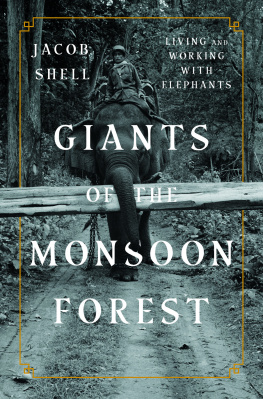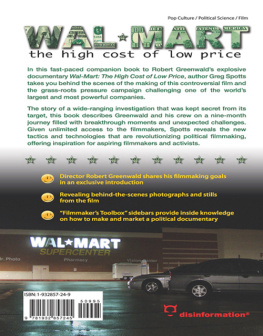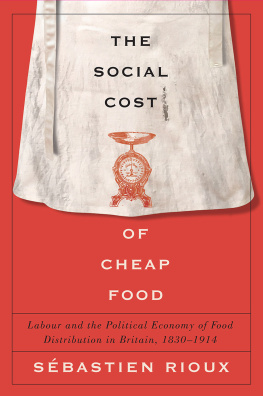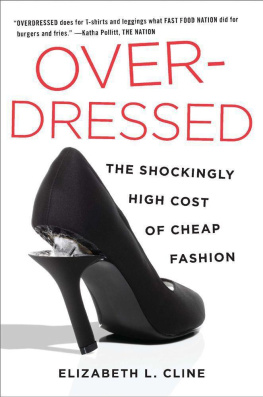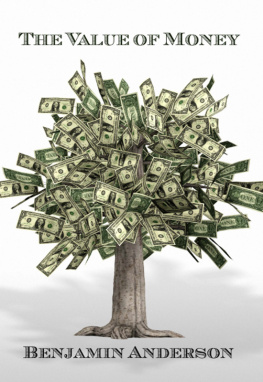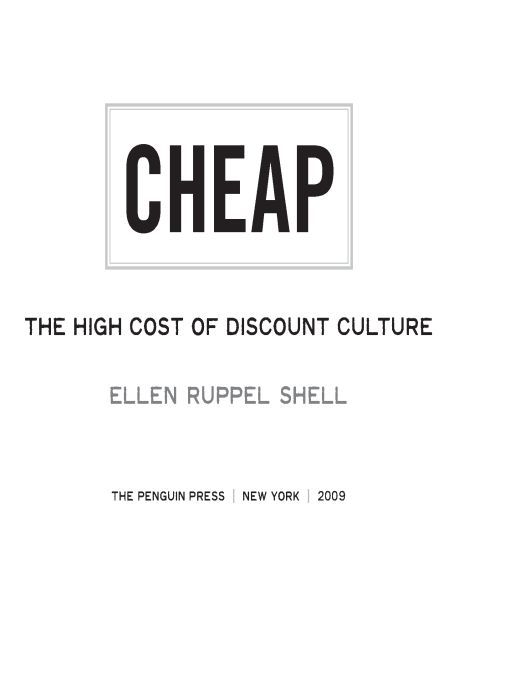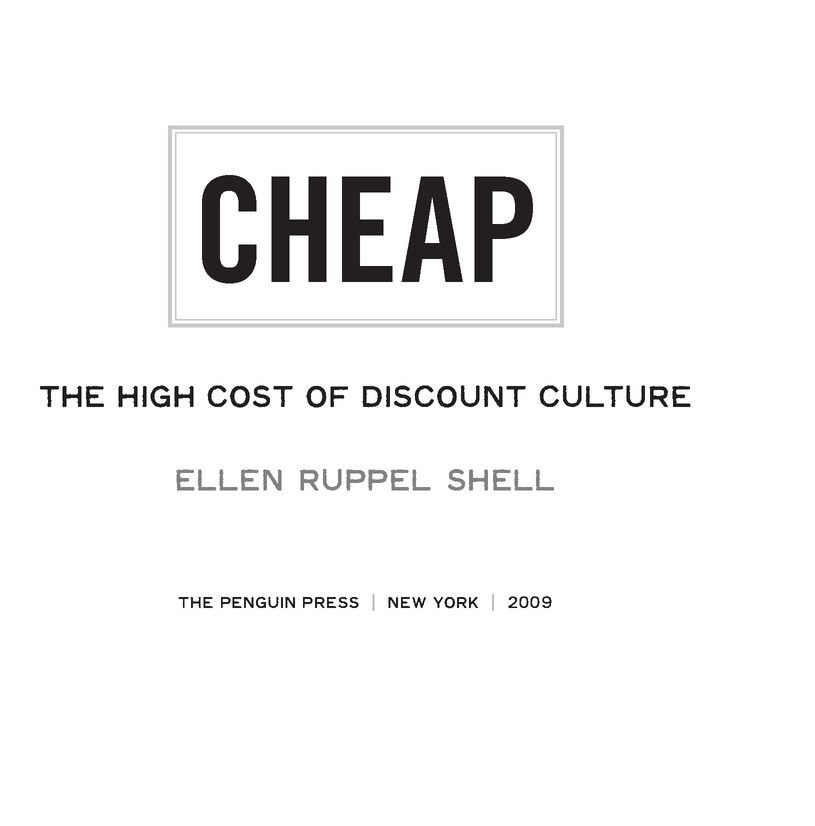Table of Contents
ALSO BY ELLEN RUPPEL SHELL
The Hungry Gene: The Inside Story of the Obesity Industry
A Childs Place: A Year in the Life of a Day Care Center
TO JO, ALI, AND MART... PRICELESS
I do not prize the word cheap. It is not a badge of honor.
| PRESIDENT WILLIAM MCKINLEY
NOTE TO READERS
This book is about Americas dangerous liaison with Cheap.
In a market awash in increasingly similareven identicalgoods, price is the ultimate arbiter; the lower, the better. I know this because I live it. I buy $10 bootleg watches from street vendors, repressing the suspicion that in six weeks time said timepiece is as likely to sprout wings as to tell time. I buy three-for-$15 underwear at Target, and discontinued glassware at the outlets. I graze the home section of discount stores to stock up on key chains and flashlights and mini tool boxes and other cool stuff too cheap to resist.
Like almost everyone, I have a wobbly budget to balance and a torrent of bills every month. But thrift doesnt explain this behavior. How thrifty is it to buy a watch with a two-month life span, or a Lilliputian hammer just in case? I would drive an extra mile to save a few pennies a gallon on gasoline but wouldnt dream of driving any distance to retrieve a fallen quarter from the sidewalk. No, this isnt about thrift. The craving for bargains springs from something much deeper. Low price is an end and a victory in itself, a way to wrestle control from the baffling mystery that is retail.
Alas, that control is largely illusory and those unbelievable deals all too believable. The underpants shred in the dryer. The hammer is too small to bang in a nail. The watch stops. Still, these deals are irresistible.
Knowing that bargains are ephemeral doesnt diminish our desire for them. It doesnt keep us from leaving a warm bed on Black Friday morning to elbow through the post-Thanksgiving mob. It doesnt stop us from draining gas and time to save two bucks on a case of diapers or Coke at the Big Box store. And it doesnt prevent us from cluttering our homes, garages, and rented storage units with cheap stuff we may have forgotten we own.
As a nation, weve come to assume that low price powers both productivity and the gross national product. Under this logic, the ebb and flow of cheap goods underlies progress and rewards us with good jobs and bright futures. Historically, key economists have endorsed this view, as have legislators. And while a smattering of consumer advocates, labor unionists, and social scientists grumble, outside of the predictable jabs at Wal-Mart few have dared to publicly challenge this orthodoxy. In these trying times, who but a hopeless elitist would suggest that low price is not an unassailable good?
I plead not guilty to that elitist charge. For most of my life, the phrase cheap thrill did not constitute an oxymoron. My personal devotion to cheap stretches back to a college diet of ramen noodles and brown ricebought in bulk. I cultivated a tolerance (though never a taste) for horse meat, thanks to its incredibly low price. Though I no longer eat palomino, until beginning this project I did comparison shop for chicken thighs, and rarely passed a jumble bin of half-priced anythingjeans, dress shirts, plumbing fixtures, gloves, coffee mugswithout giving it a good tumble. My bliss was driving into Manhattan late on a Friday afternoon and slipping into an unmetered parking spot free for the entire weekend.
What changed me was the boot incident. A couple of years ago I needed a pair of dress boots to complement a New Years Eve outfit Id purchased on super sale at Bloomingdales (you would not believe how much I saved). I went to my local shoe storea mini-outletand had a look around. The selection was just so-so. I asked the salesman whether he had anything special, and he brought over a gorgeous pair of boots from Italy. The leather was buttery, the look great, the fit perfect, but the price well out of my range. I settled for some Chinese imports selling for about one quarter the price. The boots were clunky and so uncomfortable that on New Years Day I tossed them to the back of my closet, where they landed in a heap of other unwearable good deals in bad colors or unflattering shapes: a bargain hunters pile of shame.
The footwear fiasco got me thinking about all those cheap gloves and socks and T-shirts and Guess how much I saved? gizmos cluttering my familys life. How much of this stuff had we used once or not at all and then packed away, given away, thrown away? Why were we doing this? It was time to take a hard look at this behavior, a behavior that on its face seemed not quite rational. And why was there such a scarcity of things reasonably priced? It seemed that almost all consumer good were cheap, like the Chinese boots, or extravagant, like the Italian boots. Where, I wondered, was the solid middle ground that offered safe footing not so very long ago?
Ferreting out the answer to these seemingly simple questions led to a fascinating journey, from the hinterlands of Sweden to the back alleys of Shanghai to the shipyards of Los Angeles. I met with psychologists, economists, farmers, marketers, designers, historians, cultural theorists, mathematicians, and retailers large and small. I spent a couple of years wandering a world of consumer choices driven by a system that creates the desire it claims to sate. This book explores that world and what role weas consumers and citizensplay in it.
LIKE ALL sensible journeys, this one begins with a look backward to history. Retail giant John Wanamakers inventions from the white sale to the price tag changed forever the way we shop. Also playing a role were Frank W. Woolworth, the sickly farm boy who built his Cathedral of Commerce one hairpin at a time, and appliance salesman Eugene Ferkauf and his wildly successful creation, Korvettes. The rise of technology-enabled globalism enabled a shift in power away from manufacturers and workers and onto giant retailers and their stockholders. Low price became king and the consumer its willing pawn. Simple but clever inventions like the shopping cart and the bar code abetted the shift from full service to self-service, further reducing the need for skilled staff and offloading more responsibility onto consumers. Over time, choice became restricted by pricewhat could not be sold cheaply, like the Chinese boots, became a de facto luxury, like the Italian boots. Discounting reshuffled Americas demography, hastening the collapse of cities and the flight to the suburbs. In the distribution upheaval of the early 1960s, hundreds of merchants were put out of business by the looming discount behemoths. By the late 1970s, discounting had infiltrated every market segment, and the emergence of category killers in hardware, toys, and furniture had killed off more than half of existing retail chains. Millions of jobs were shipped overseas as discounters leaped at every opportunity to buy from foreign suppliers. Prices crashed, consumer debt soared, and Americans put their futures on the installment plan.
What does this have to do with us today? Well, quite a lot. From the day we open our first lemonade stand, most of us understand that price is a relative matter, one that can infuriate, surprise, sadden, or delight. As Harvard Business School professor Gerald Zaltman told me, Price is typically a number, but there is nothing more subjective. Who knew that the way prices are positioned on a menu can influence what we eat for lunch or that some numbers trigger in our minds the flashing light of good deal, while others send signals of rip-off ? Looking deep inside the human brain, neuroscientists have discovered that the very anticipation of a bargain sets our neural networks aquiver. The manipulation of price can confuse us, block the thinking part of our brain and ignite the impulsive, primitive side, the part that leads us to make poor decisions based on bad assumptions. Ever wonder why youll drive five miles out of your way to save a buck on a six-pack of beer or, for that matter, a tank of gas? Or why youll snap up a sweater marked down from $150 to $50 but pass up the very same sweater selling for full price at $50? Or why youd prefer to pay more for an item than witness someone else pay less? Ever wonder why your own closet is cluttered with ill-fitting shoes and T-shirts in unbecoming shades? As we will see, science has the answer.


